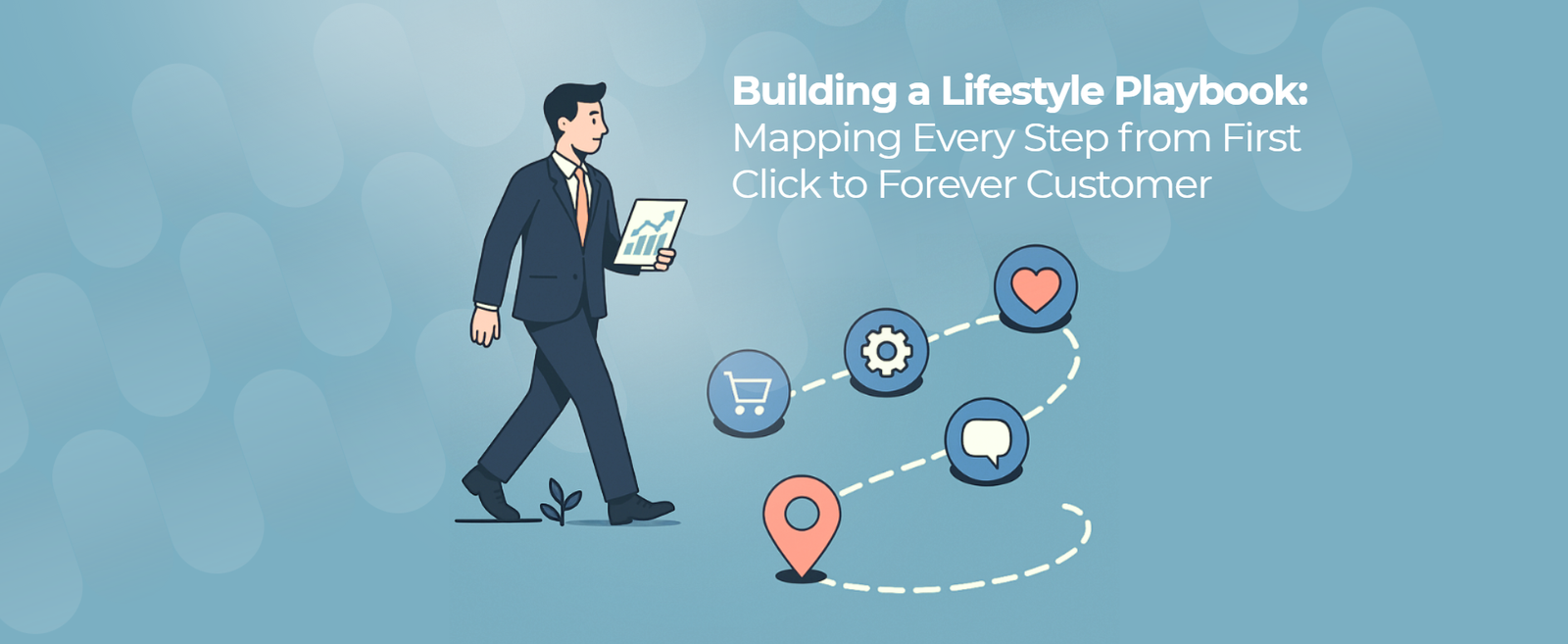Building a Lifecycle Playbook: Mapping Every Step from First Click to Forever Customer

Introduction: Why Lifecycle Strategy Beats One-Off Campaigns
Great brands don’t just sell. They guide customers through an intentional journey that starts with curiosity and ends in loyalty. While most ecommerce stores focus on isolated wins like a welcome discount or a reactivation email, the most effective brands operate from a full customer lifecycle playbook.
From the first click to the final reorder, every moment is a chance to deliver value and deepen the relationship. This blog breaks down how to build a strategic lifecycle map that supports your retention marketing goals, using smart segmentation, timely messaging, and journey-based thinking.
What is Customer Lifecycle Marketing?
Customer lifecycle marketing is the process of engaging your audience based on where they are in their journey, not just what you want to sell. It combines acquisition, onboarding, engagement, reactivation, and everything in between to drive long-term customer value.
Instead of thinking in campaigns, lifecycle marketers think in phases:
- How are we welcoming new subscribers?
- Are first-time buyers converting into repeat customers?
- When does churn risk start to rise, and how do we stop it?
This mindset shift builds stronger retention systems and leads to higher customer lifetime value (CLV).
Step 1: Start with the Lifecycle Stages
To build a strong lifecycle playbook, you first need to define the major touchpoints in your customer journey. While these can be tailored to your brand, most DTC brands follow a structure like this:
- Subscriber Stage: They signed up but haven’t purchased.
- First-Time Buyer: They just converted. Now what?
- Repeat Buyer: They’ve purchased multiple times.
- Loyal/VIP Customer: High-value and deeply engaged.
- Lapsing Customer: At risk of churning.
- Churned Customer: Haven’t returned in a long time.
Each of these stages requires different messages, flows, and CTAs. Let’s map those next.
Step 2: Map Campaigns and Flows to Each Stage
1. Subscriber (Pre-Purchase)
This is your welcome series opportunity. You’re building trust, explaining your brand, and nudging toward the first sale.
Key emails:
- Welcome message with brand story
- Social proof (testimonials, press)
- First-purchase incentive (optional but common)
2. First-Time Buyer
The post-purchase experience sets the tone for long-term retention. Education and delight matter more than discounts here.
Key emails:
- Order confirmation with “what to expect”
- Product usage tips or how-to guides
- A check-in email after delivery
- Cross-sell introduction after a few days
3. Repeat Buyer
Once someone comes back for round two, it’s time to recognize and elevate them. You’re building habits.
Key emails:
- Thank you note or brand appreciation
- Personalized product recommendations
- Invitations to loyalty programs or exclusive lists
4. VIP Customer
These are your most valuable buyers. Give them access, status, and input into the brand.
Key flows:
- Early access to new drops
- Community stories and founder messages
- Personalized milestone emails
- Priority support or exclusive rewards
5. Lapsing Customer
Watch for signals like a longer time since last order or declining engagement. Your goal is to reactivate without looking desperate.
Tactics:
- “We miss you” reminder
- Highlight what’s new since their last visit
- Replenishment cues if applicable
- Email with recent reviews or bestsellers
6. Churned Customer
This is your last shot. Focus on relevance and reason to return. Avoid heavy discounts unless you know price was the issue.
Approaches:
- “Come back and see what’s changed”
- Category-specific recommendations
- Emotional re-engagement (nostalgia or community angles)
Step 3: Track the Right Lifecycle Metrics
Lifecycle marketing is strategic, but it must be supported by measurable signals. Here's what to monitor across each stage:
- Time between first and second purchase
- CLV by lifecycle stage
- Email engagement over time
- Repeat purchase rate
- Reactivation success rate
These metrics help you understand if your lifecycle strategy is working or if certain segments are stalling.
Step 4: Sync Lifecycle Data with Klaviyo and Shopify
Your lifecycle strategy is only as powerful as your ability to act on the data. Klaviyo and Shopify provide the perfect stack for tracking, segmenting, and triggering flows across each phase.
Recommended setup:
- Use Klaviyo’s custom properties to tag lifecycle stages
- Automate flow entry and exit based on behavioral triggers
- Connect Shopify customer and product data for tailored content
- Build dashboards to monitor flow performance by stage
This unified view lets you shift from random campaigns to intentional lifecycle orchestration.
From First Click to Forever Customer
Most brands focus too much on the first sale. The real growth lies in what happens after. By building a complete lifecycle playbook, you move from transactional tactics to long-term customer success.
Each phase has its own challenges and opportunities. With the right content, cadence, and segmentation, you can turn one-time buyers into lifelong advocates.
Need Help Building Your Brand’s Lifecycle Strategy?
At WERTEC, we build retention systems that span every step of the customer journey. From onboarding to reactivation, we help you unlock the full potential of lifecycle marketing.
Let’s turn your lifecycle map into real revenue growth.